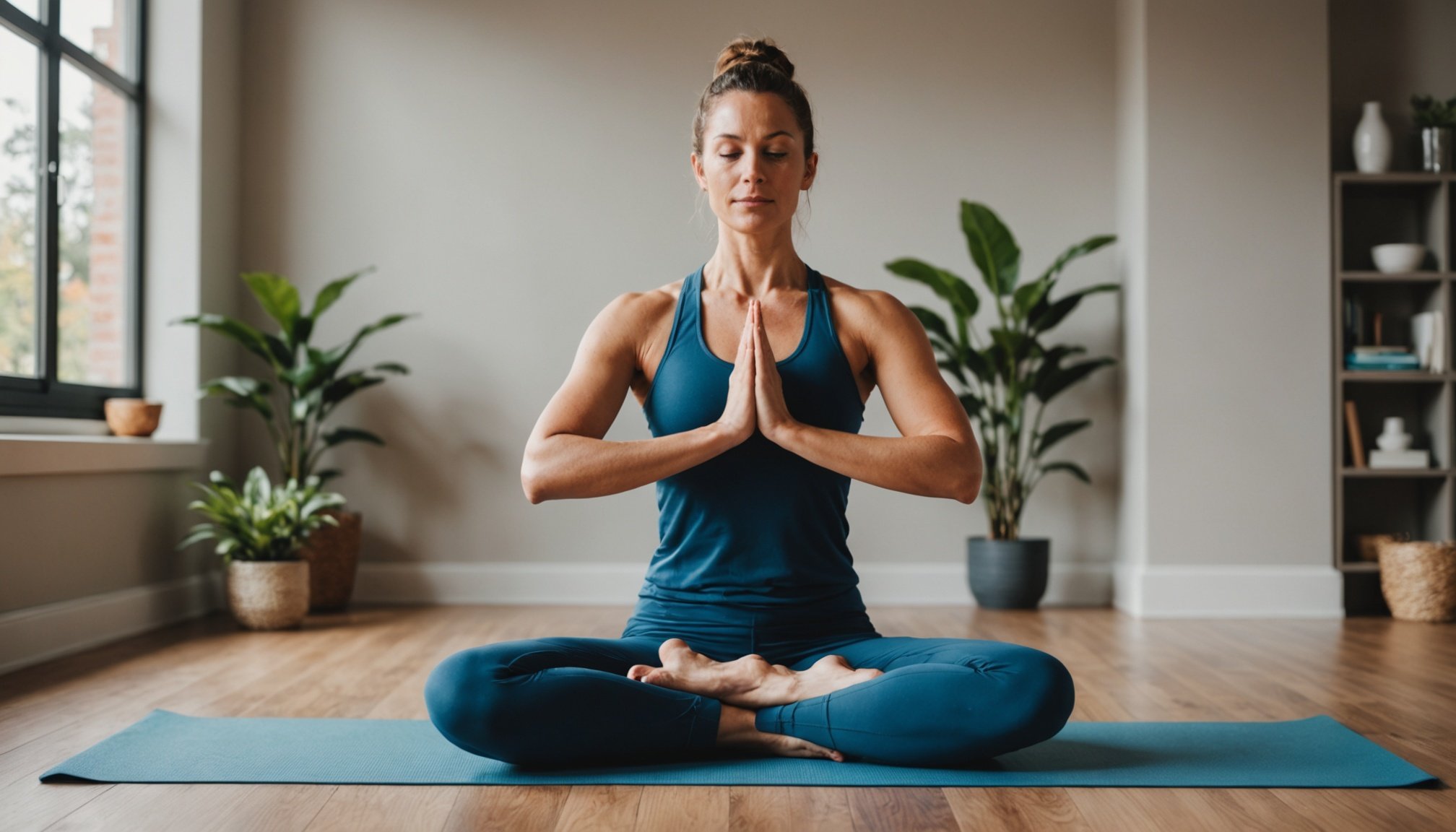Understanding Stress Relief Through Yoga
Stress relief is a pressing concern in today’s fast-paced world. It affects not just our mental well-being but also our physical health, leading to issues such as headaches, fatigue, and even weakened immunity. Here is where yoga comes into play, offering a holistic approach to managing stress.
Yoga promotes relaxation and mental clarity through various techniques and practices. By focusing on mindful movement, individuals can achieve a deeper connection between the body and mind. This state of mindfulness helps in reducing the chaos often caused by stress.
Also to see : Unlock Eco-Chic Style: The Sustainable Advantages of Bamboo Fabric for Your Fashion Collection
The benefits of integrating yoga into your daily routine are well supported by research. Studies indicate that consistent practice can lead to significant reductions in cortisol levels, often referred to as the stress hormone. In addition, yoga can enhance mood, improve sleep quality, and increase overall mental alertness.
The practice of yoga encourages a shift in perspective, enabling individuals to approach stressful situations with a calmer mindset. By combining physical postures with breath control and meditation, yoga serves as a comprehensive tool for stress management. Integrating these elements into your routine fosters resilience against stress’s adverse impacts.
In parallel : Elevate your style: curate a chic minimalist wardrobe for timeless fashion
Essentials of a Personalized Yoga Flow
Understanding the personalized yoga approach allows for targeted stress management and unlocking its many benefits. To begin, identify individual stress factors and personal goals. This lays the groundwork for a yoga sequence uniquely suited to your needs.
Recognizing personal triggers, whether they stem from work, family life, or personal challenges, is crucial. Once identified, tailor your practice to address these issues. The key components of a personalized yoga flow involve setting clear objectives, such as increasing flexibility, achieving relaxation, or balancing mental clarity.
Crafting a tailored practice involves flexibility and adaptability. Unlike rigid routines, a personalized yoga sequence should evolve. It can adapt based on your emotional state, physical condition, or time constraints. Being open to modifying poses and techniques ensures the routine remains effective in providing stress relief.
Incorporate different styles and approaches as you design your flow. Consider elements like breathwork, meditation, and mindful movement to enhance the experience. By cultivating a practice that resonates with you, stress relief becomes a more achievable goal. Remember, the journey to a fulfilling yoga practice is personal and ever-changing.
Techniques for Effective Stress Relief Poses
Incorporating specific yoga poses and mindfulness practices can significantly enhance the stress relief experience. Different poses serve different purposes, providing tension alleviation and promoting a state of mindfulness. To maximise the effectiveness of yoga for stress relief, integrating breathing techniques is paramount.
Descriptions of Key Poses
Key poses such as Child’s Pose and Legs Up the Wall are renowned for their stress-relieving properties. Child’s Pose, with its forward-folding motion, provides a gentle stretch to the back while offering a soothing effect on the mind. Legs Up the Wall helps in calming the nervous system and promoting circulation, which combats stress effectively.
Breathing Techniques
Controlled breathing techniques, such as deep inhalations and exhalations, can deepen the yoga experience by enhancing relaxation. Practicing diaphragmatic breathing while in these poses can help reduce anxiety and increase mental clarity, solidifying the practice as a strong tool for stress management.
Mindfulness Integration
Mindfulness practices, combining gentle movements with focused attention, further enrich the stress relief process. By concentrating on each breath and motion, individuals can attain a deeper connection to the present moment. This mindfulness is essential in reducing stress-related chaos, promoting emotional and mental equilibrium.
Step-by-Step Blueprint for Creating Your Yoga Sequence
Developing your unique yoga sequence blueprint requires careful consideration and understanding of your body and mind. Here’s a step-by-step guide to help you create an effective flow.
Assessing Your Current Skill Level
The creation of a personalized yoga sequence begins with an honest evaluation of your current skill level. Whether you’re new to yoga or have had some experience, recognising your limitations will ensure a safer and more beneficial practice. This assessment allows you to identify which poses are appropriate and which might require further guidance.
Choosing Poses for Stress Relief
Selecting the right poses is crucial for a stress-relief-focused flow creation. Consider incorporating poses known for their calming effects, such as Child’s Pose or Cat-Cow Stretch. These poses alleviate tension and support mindful relaxation.
Structuring the Sequence
Organize your yoga practice into a coherent flow by arranging poses to transition smoothly from one to the next. Start with gentle warm-ups, progress into more dynamic poses, and conclude with calming, restorative postures. This methodical approach not only enhances your yoga sequence but also maximizes stress reduction, helping you achieve a sense of balance and tranquility.
Customizing Duration and Intensity
Finding the right yoga duration and intensity for your practice is essential in achieving effective stress relief. It requires attention to your energy levels and past experiences with yoga to determine what suits you best. Generally, a session lasting between 20 to 60 minutes can be optimal, allowing enough time to engage in a comprehensive practice without overwhelming the body or mind.
Intensity levels should be adjusted based on how you feel each day, as energy and mood can fluctuate. Beginners might start with gentler flows, focusing on mindful movement and fundamental poses. More experienced practitioners might opt for higher intensity sessions, incorporating challenging postures to engage the whole body and mind.
Listening to your body is crucial during practice. Pay attention to signs of fatigue or discomfort, as pushing beyond limits can lead to injuries rather than relief. Modify poses to reduce strain, and don’t hesitate to rest if needed. Recognising when to pause enhances the awareness of your body’s needs, a critical component in developing a personalized, effective yoga regimen.
By understanding your body’s responses and adapting your practice accordingly, you ensure that yoga becomes a safe and beneficial part of your routine.
Modifications and Safety Considerations
In the journey toward stress relief through yoga, yoga modifications are vital for accommodating various skill levels and ensuring comfort. Adjustments can help beginners ease into the practice without feeling overwhelmed. For instance, using props like blocks or straps can aid in pose execution by providing necessary support.
Safety in yoga is paramount, as incorrect execution can lead to injuries. Pay attention to alignment and body cues to avoid strains. Pushing beyond limits often leads to pain, which is counterproductive in stress management. Adopt a gentle approach, especially when attempting new poses. Modification in pose execution, such as a gentler stretch or a reduced range of motion, aids in maintaining safety and enhances the overall benefit of the practice.
Seek professional guidance when uncertain. Yoga instructors provide valuable insights into safe practices and modifications tailored to individual needs. In scenarios where a pose feels uncomfortable despite modifications, professional advice can prevent potential harm, ensuring a safe and fulfilling experience. Adopting these strategies nurtures a safer yoga practice, promoting consistent progress in stress management.
Visual Aids and Resources
Integrating yoga visuals and step-by-step diagrams into your practice can significantly enhance the experience, especially for those new to the discipline. Visual aids provide clarity in understanding pose alignment and facilitate a smooth transition through sequences. These resources are invaluable for a personalized flow, ensuring you can maximize the benefits of each session.
For effective guidance, utilizing platforms such as yoga apps and instructional videos can offer comprehensive support. These resources often feature multiple levels of practice, catering to beginners and advanced practitioners alike. The visual components help demystify complex poses and demonstrate safe alignment, enhancing safety in yoga.
Recommended apps and online platforms, replete with professional guidance, are ideal for those seeking flexibility in practice. This accessibility allows practitioners to explore various styles and techniques, incorporating personalized yoga into daily routines effectively. Many resources provide tailored sequences that align with individual goals, ensuring you remain engaged and motivated.
In addition, engaging with yoga communities online can provide encouragement and shared learning experiences. Connecting with others on social media or participating in virtual yoga challenges further support the journey toward achieving stress relief and mental clarity.











